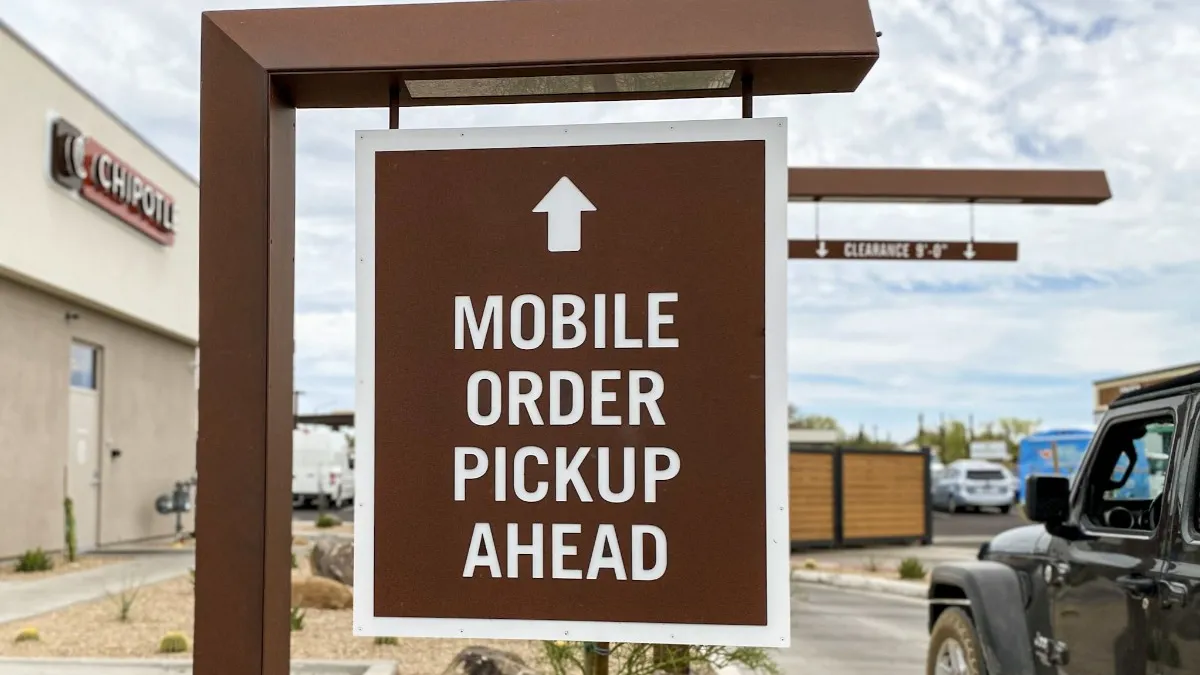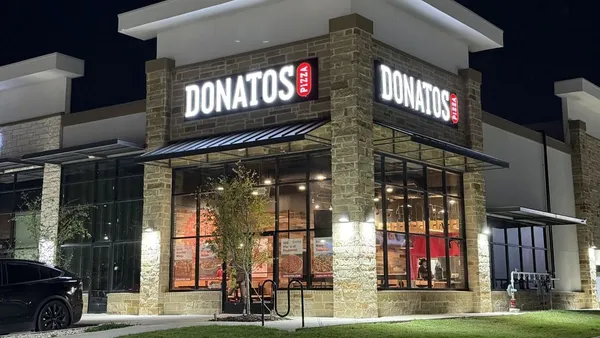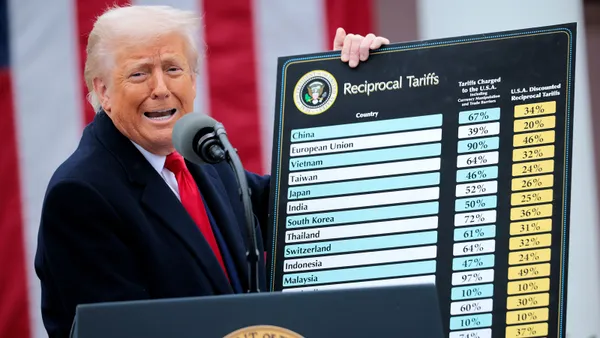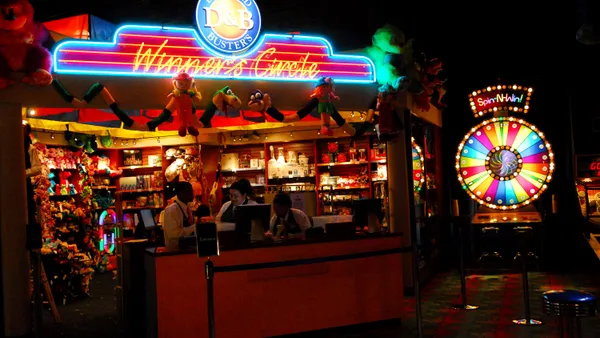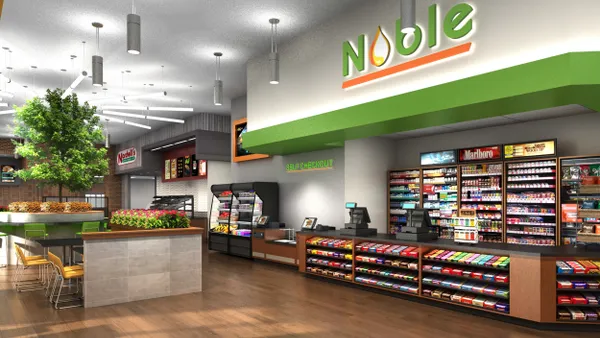While many fast casual chains scrambled to bolster their off-premise traffic during the height of the pandemic, Chipotle cashed in on its already existing contactless ordering, digital-friendly Chipotlane concept. Now the company is opening its 100th digital order drive-thru in Columbus, Ohio, this month — two years after the concept was first introduced in the city — and plans to rapidly expand the model across its network.
During the first quarter, the company opened 19 new Chipotles, 11 of which feature a Chipotlane. The concept is now in 32 states, according to the press release, and is already driving significant returns. Even with stay-at-home orders in place nationwide, the chain grew its digital sales 81% in Q1.
Chipotlane restaurants tend to have 5% to 10% higher sales than an average Chipotle, Scott Boatwright, Chipotle's Chief Restaurant Officer, told Restaurant Dive.
"It's literally our most profitable transaction," he said. "It's really helping out drive topline sales and also improves margins for the organization as well."
At the start of the year, the company committed to building 150 to 165 Chipotlanes in 2020.
"We fully intend to live up to that commitment," Boatwright said.
Development was only paused in April, and Chipotle has shifted those projects to Q3 and Q4, he said.
Chipotle sees a lot of white space to grow in both urban and suburban areas, especially in regions where the brand feels like consumers want access to a restaurant that offers fresh, high-quality ingredients, he said. The company is looking at taking over existing buildings vacated by QSRs and building ground-up developments or end-cap units, Boatwright said.
And more opportunities for development are expected as other brands contract during the pandemic, Boatwright said.
"We're seizing those opportunities where they exist," Boatwright said.
With its plans to double its unit size domestically in the long-term — it currently has over 2,600 units — the chain has also been getting a lot of attention from developers and landlords.
"I think that puts us in a very competitive ... position specifically because our growth plans are so aggressive," Boatwright said. "Landlords have been willing to work with us and give us looks ... that maybe aren't available to other brands."
Building a digital stronghold
As the company strives to double its domestic footprint, Chipotlanes will be a defining part of its future. The company expects this concept to make up 60% of its new projects going forward, especially since they provide better sales and improved customer access, Boatwright said.
"We're really pivoting the entire portfolio to this Chipotlane concept," Boatwright said.
Prior to its digital push, which included pickup shelves and second makelines, one of the brand's biggest challenges were long lines that would potentially scare off guests stuck at the back.
By having Chipotlanes, guests can order ahead and drive up to the Chipotlane at their designated time and receive their orders in seconds, Boatwright said. Chipotlanes also provide a contactless experience where customers don’t have to get out of their cars — a benefit during the pandemic, when more people are apprehensive to enter a facility.
Chipotlanes are supported by a second makeline, an operation most Chipotles now include, that processes digital orders for pickup and third-party.
The online ordering process also allows customers to see if nearby locations have a Chipotlane, which they can choose for pickup, Boatwright said. How a customer orders — through a Chipotlane, pickup in store or delivery — will dictate where an employee will prepare an order to make it more efficient, he said.
Adoption of Chipotlanes by customers also tends to be almost immediate, especially once guests see that their local Chipotle features one of the drive-thru lanes.
"They really see that that access point is available, [and] they start to use it very quickly," he said. "The digital performance really accelerates in the Chipotlane environment."
The digital strategy doesn't stop with Chipotlanes either. At the end of 2019, it rolled out a test of pickup windows in Wrigleyville in Chicago. While COVID-19 reduced the amount of baseball foot traffic, the pickup window has had a high user adoption that increases immediately, Boatwright said.
These windows function similar to a Chipotlane, where a customer orders ahead and picks up without having to enter the store. These windows open up the possibility of providing contactless delivery in urban markets, which aren't able to accommodate a drive-thru style operation as easily.
"We’ll continue to leverage that opportunity in urban settings, college universities and those types of places of high foot traffic," he said.
A previous version of this article misidentified Scott Boatwright's job title. He is Chief Restaurant Officer.



